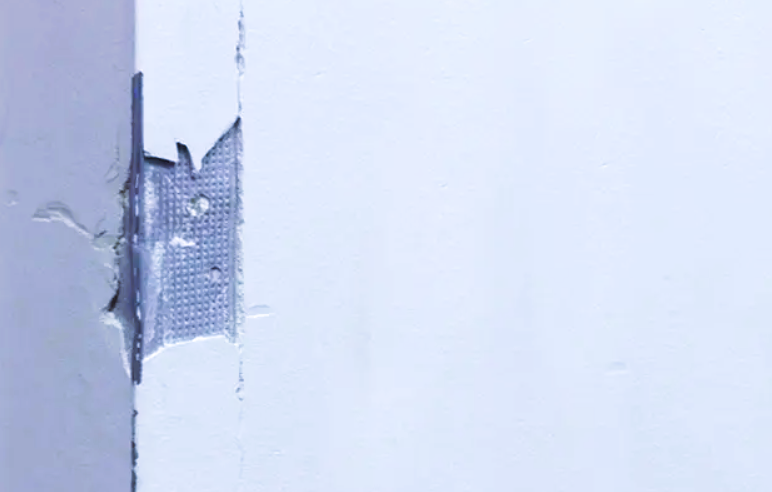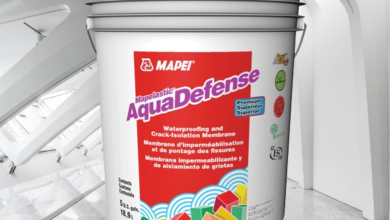What's the Metal Behind Drywall?

Wooden studs, fiberglass or foam insulation, window/door headers, wiring, and plumbing pipes are the items you will probably discover behind drywall.
Additionally, you can run across rubble and fire blocks. However, what if metal is discovered behind drywall? Why can there be metal under drywall?
I’ll go over some of the typical justifications for using metal beneath drywall in today’s post, along with a few other items you should be aware of.
Which kind of metal is utilized to support drywall?
Behind drywall, two primary kinds of metal are frequently utilized:
- Metal studs: I have some news for you if you believed that drywall studs were solely composed of wood. An excellent choice for wall framing is metal studs. They are more robust and mold and fire resistant.
Metal studs are also impervious to insect damage, unlike wood. Additionally, they won’t rust if you choose the steel version. As a result, it’s likely that the metal behind your drywall is used for the studs.
Please be aware that metal studs typically measure two by four inches and are vertical. They could be separated by sixteen or twenty-four inches.
- A metallic protection plate: As you are probably well aware, pipes and cables pass behind drywall. Drywall is insufficiently robust to provide a barrier of protection on its own.
Consequently, it’s possible that the prior homeowner put up a metallic protection plate behind the drywall. It should be a sheet rather than studs if it’s a metallic plate. Additionally, it must to span a larger area both horizontally and vertically.
Why Is Drywall Supported by Metal?
Additionally, there are two primary justifications for using metal beneath drywall:
- It can serve as support for the installation of drywall.
It is not possible to simply screw drywall into insulation or sheathing. The purpose of the metal studs is to secure the drywall pieces together. They are a few inches apart because of this.
- Metal can also be utilized to shield plumbing pipes or cables beneath walls.
Pipes or electrical lines may run behind the frame, depending on how your house is configured. A builder might place a protective metal sheet underneath the drywall to safeguard these cables.
What Are the Signs of Metal Behind Drywall?
Determining whether metal is present behind drywall is not too difficult. You might notice metal behind the wall when repairing drywall.
On the other hand, you might find that certain portions of drywall are difficult to drill. If you look more closely, you should see the metal behind it.
Avoid driving your drill into metal that is hidden behind drywall as this could harm pipelines and wires. You must realize that the use of metal underneath your drywall has a legitimate purpose.
How Can an Appliance Be Installed Over Drywall When There Is Metal Behind It?
Drilling through drywall is one approach to find metal behind it, as was previously indicated. When you plan to install a TV, microwave, refrigerator, or dishwasher into your wall, drilling is typically required.
If you want to continue with the installation after finding metal beneath drywall, here’s how to do it safely.
Finding out what kind of metal is behind the drywall is the first step. It should be simpler to install your electrical item if they have metal studs. You must determine what it is protecting, though, if it is a metal sheet.
In the first case, you can drill right inside the studs after determining their location. After that, install your device.
Second, you’ll need to cut both the metal sheet and the drywall if it’s a metal sheet. Before screwing plywood over the studs and mounting your equipment, reposition the pipes or wires.
The latter approach takes a lot of time and is a little frantic. It is therefore preferable to avoid interfering with any protective metal sheet that you may see under drywall.
Is It Safe to Approach Metal Behind Drywall?
Of course. You should exercise caution if you ever find yourself in a circumstance where you have found metal under drywall. Electrical cables or pipes may be covered in metal under drywall.
Suppose you disregard caution and continue drilling deeper into the metal sheet, only to pierce an electrical cable or water line.
How terrible would that be, do you think? If you live in a rented apartment, you can potentially be evicted in addition to the high cost of the repairs.
Metal behind drywall should always be approached carefully. You shouldn’t meddle with it unless you understand why it’s there in the first place.
Is It Possible to Determine Whether Metal Is Present Behind Drywall Without Drilling?
You can detect the presence of metal under drywall without having to pierce it. You can quickly determine whether there is metal behind drywall by passing a magnet over it. Both metal studs and protective metal sheets need to attract the magnet more strongly.
Compared to nails or screws, the magnetic attraction will be far stronger. There is no chance of harming other materials under your drywall with this less intrusive technique.
To identify metal under drywall, skilled professionals might use an electronic wall stud finder.
How Can Metal Behind Drywall Be Repaired or Replaced?
Because of their nature, metals hardly ever get damaged or require replacement or repairs. You don’t have to be concerned about problems like mold or warping unless the metal begins to rust. Therefore, it is quite uncommon that you will need to replace or repair metal under drywall.
However, in order to access the back region, you will need to take out a section of the drywall. After that, you can replace or fix the metal before plastering it over.
It is a labor-intensive and time-consuming technique. I strongly advise hiring a skilled contractor for this kind of work if you’re not a do-it-yourselfer.
Is Metal Often Found Behind Drywall?
Not at all. The majority of homeowners and builders like using wooden studs behind the plasterboard. Because of this, metal studs behind the drywall are quite uncommon.
The majority of contemporary homes have pipes and wires positioned carefully to prevent situations where someone might drill into the protective metal sheets.
Metal behind drywall isn’t a typical setup, in my opinion. However, you should ask the landlord or former owner if there is metal under the drywall before drilling into it.
Which Rooms Have the Highest Probability of Having Metal Behind Drywall?
The majority of people who discover metal behind drywall in their houses typically do so in the kitchen, bathroom, or living room.
Most homeowners typically work on a variety of projects in these three rooms, including hanging mirrors, installing appliances, and painting portraits. In order to protect pipes and cables, builders may choose to use protective metal sheets underneath drywall.
When the metal becomes the shape of drywall studs, it is utilized throughout the entire home or land.

